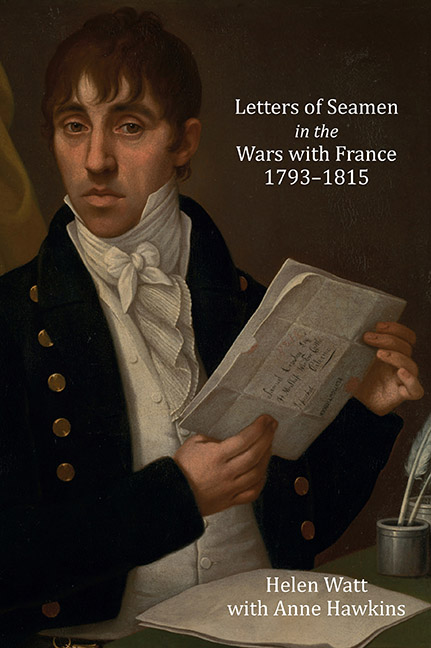Book contents
- Frontmatter
- Dedication
- Contents
- List of Illustrations and Tables
- Foreword
- Preface
- Acknowledgements
- Editorial Conventions
- List of Abbreviations
- Introduction
- Part 1 Thus Dear Father passes the life of a Tar’: Letters of Seamen, 1793–1815
- The Letters A1–194
- Part 2 A great Disturbance among the Fleet’: Letters, Mostly Intercepted, to and from Seamen During the Mutinies in the Royal Navy, 1797
- Letters B1–61
- Conclusion
- Appendix I Biographies
- Appendix II Select Ships Involved in the Mutinies in the Royal Navy, 1797
- Bibliography
- Index
Introduction
Published online by Cambridge University Press: 26 May 2021
- Frontmatter
- Dedication
- Contents
- List of Illustrations and Tables
- Foreword
- Preface
- Acknowledgements
- Editorial Conventions
- List of Abbreviations
- Introduction
- Part 1 Thus Dear Father passes the life of a Tar’: Letters of Seamen, 1793–1815
- The Letters A1–194
- Part 2 A great Disturbance among the Fleet’: Letters, Mostly Intercepted, to and from Seamen During the Mutinies in the Royal Navy, 1797
- Letters B1–61
- Conclusion
- Appendix I Biographies
- Appendix II Select Ships Involved in the Mutinies in the Royal Navy, 1797
- Bibliography
- Index
Summary
In an age when many means of communication are electronic, instant and ephemeral, letters, written by hand on paper and entrusted to the mail long ago, have become precious ‘for their intimacy and immediacy’. Perhaps partly for this reason and partly for the insight they give into the world of their writers, there has recently been an explosion of interest in this type of document as an historical source. This interest is particularly evident in Britain and Europe, and embraces letters written by a wide variety of social and intellectual groups. As well as many collections in print of letters of the British aristocracy, gentry, scholars and writers, some with leanings towards the literary genre, attention has also turned to letters from other levels of society. There is now the groundbreaking analysis by Susan Whyman of letter-writing among the middle and lower classes between 1660 and 1800 and other historians have examined letters from the lowest echelons of society, including paupers and criminals, also dating from the eighteenth and nineteenth centuries. Such letters are notable for having been written several decades before literacy became widespread following the introduction of state education in England and Wales with the 1870 Elementary Education Act. Nevertheless, in the light of her study of letter-writers of belowgentry status, Susan Whyman has suggested that, by 1800, literacy had spread to all classes of society and that during the mid to late eighteenth century, there must already have been a popular culture of letter-writing in which even ‘untrained writers’ could take part.
In seeking to explain the development of such a culture, historians have identified several possible influencing factors. Susan Whyman points out that by that time, key requisites for its spread were in place: a well-established Royal Mail and a society generally literate enough to take advantage of its networks. Peter Sutton also discusses the importance of being able to read and write to the people of a seafaring country, such as the Netherlands in the seventeenth century, to keep the high proportion of the male population who were at sea at any given time in touch with people at home.
- Type
- Chapter
- Information
- Letters of Seamen in the Wars with France, 1793-1815 , pp. 1 - 28Publisher: Boydell & BrewerPrint publication year: 2014



